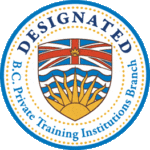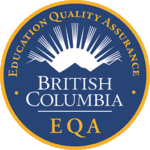Foundation Curriculum
Principles of Practice 1.0 – 100 hours
The source of great yoga teaching is personal practice. Personal practice opens the door to the teacher’s innate wisdom, allowing that wisdom to be expressed “from the heart”. Using the principles of modern holistic biomechanics, teachers in training utilize the most elegant and user-friendly methods available. Rather than adhering to a specific sequence of postures only, daily practice includes creative sequencing techniques. Some Pranayama (breath expansion) techniques and an introduction to meditation are components of daily practice. By the end of the program teachers in training will have a well-rounded personal yoga practice that informs their teaching.
Teaching Methodology 1.0 – 25 hours
This 200-hour yoga teacher training program’s central focus is on how to lead a safe, effective and joyful yoga class. The methodology of teaching plays an integral role in leading a successful and interesting yoga class. Teachers in training learn to listen to their own voice, their own particular pattern of language, and from there begin to examine and refine communication to become as clear as possible. This approach has far-reaching effects on and off the mat. Beginning by writing and then speaking simple scripts describing the performance of everyday activities – things we take for granted like opening a door – the mechanics and the art of precise direction unfolds.
By the time the teachers in training lead their own classes, they are fully aware of nuance of language and how to use it effectively to inspire and deepen the experience of yoga for their students. This skill coupled with an understanding of bio-mechanics, optimal alignment, verbal and physical adjustments and developing a class intention to enrich and add meaning to their class gives VSOHA’s teachers in training a diverse and colourful pallet to draw from. Ultimately, it is our own inner wisdom, humour and unique voice we seek to reveal as a teacher.
Physical Adjustments
A Yoga student absorbs information in three ways – verbally, visually, or through sensation. Touch can be one of the most powerful teaching tools a teacher has. Understanding types of touch – directive, affirming or therapeutic – teachers in training develop appropriate and non-injurious skills to communicate and connect with their students.
Anatomy & Physiology 1.0 – 20 hours
An understanding of the structure of the body and how postures create change within that structure is key to safe instruction. Practical applied anatomy, observing types of body – organic or muscular – is a component of the anatomy training. Compressive and tensile forces and variations in skeletal structure are explored as well as muscle groups, the subtle body, and it’s energies. Students are provided with an excellent text to support their studies in Anatomy.
Yoga Philosophy, Ethics & Lifestyle – 30 hours
Philosophy
When teaching this art and science of Yoga, the question “What are we actually teaching?” needs to be answered. Yoga philosophy can be interwoven into the physical practice itself to enrich the experience and give it context. The origins of Yoga and the development of its philosophy are fascinating subjects. Yoga philosophy ultimately seeks to answer the question “who are we?” Through lectures, D.V.D. presentations and discussion, a foundation of understanding is developed. Classical Yoga, Tantra Yoga and the dualistic and non-dualistic philosophies are explored. Key texts – The Upanishads, the Bhagavad Gita and Patanjali’s Yoga Sutras are also summarized.
Ethics and Lifestyle
What is ethical behaviour? How does a lifestyle aligned with our highest good affect our ability to teach? Considering these questions and the approaches Yogic texts have taken, as well as how our modern world deals with these questions is the starting point for a discussion of Ethics. Teachers in training also play-act practical situations to embody an understanding of the importance of Ethics.
Meditation and Chanting
Stillness can allow our innate nature to become visible. Invoking energy through the vibration of sound can harmonize us with our environment. Students learn the role these approaches play in creating sacred space, and learn several Sanskrit invocations and their meaning.
Sanskrit Basics
If you can say “Extra-hot, non-fat, triple-tall no-foam half-caf Grande Cappuccino”, you can pronounce posture names in Sanskrit. Sanskrit is understood to be a “revealed” language. Though it is not necessary to teach a Yoga class entirely in Sanskrit, the language itself holds a certain power and beauty. Often it is easier to teach a class a posture name in Sanskrit than try to find an appropriate English equivalent. Posture names and the basic root components of those names are studied.
Practicum 1.0 – 10 hours
Each student will teach a whole yoga class toward the end of the program to her/his class. Students will be graded according to a specific criteria.
Additional Assignments & Homework – 15 hours
(This concludes 200/240 requirements)
Advanced Curriculum
Principles of Practice 2.0 – 140 hours
Excellent teaching is founded in dedicated practice over a long period of time. The advanced training invites a richer look into your inner life through practices of meditation and pranayama techniques, and their solid integration into your daily practice and ultimately into our teaching environments. With a consistent attention to daily asana (postures), including intermediate asana exploration, teachers in training will learn mantra and chanting practices to further explore their inner landscape, increase their experience of these both traditional and accessible techniques, and to share their teachings from the seat of direct experience.
Teaching Methodology 2.0 – 60 hours
This 300-hour teacher training’s central focus is on unearthing your most authentic voice, deepening your experience, and clarifying your path as a career yoga teacher. Teaching exercises will work on polishing your observation skills, teaching voice, teaching to all levels, and addressing common misalignments and therapeutic concerns with increased precision of both verbal and physical assists. Learn to address structural alignment in a room of one or fifty students; how to expertly guide a restorative yoga practice; and to serve your pregnant students with ease . Through increased understanding of bio-mechanics, refined and creative approaches to class-building and sequencing, mindfulness of language, and diversification of skills, teachers will leave this training more confident in their ability to offer superior and inspired yoga instruction.
Business of Yoga – 15 hours
Grow your career in yoga teaching, remaining anchored in integrity and in the reality of an abundant and competitive industry. Learn tools for effective and creative use of social media, explore branding, and practical, efficient tools for the day-to-day management of your yoga business. A career in yoga can take a multitude of shapes – presenters will generously share their unique experiences and skills to inspire career expansion – from studio owners, to niche markets, to online yoga businesses, teacher training faculty, and beyond.
Anatomy & Physiology 2.0 – 25 hours
An endless curiosity for the body and its systems is one of the secrets to being a successful yoga teacher. After all, we ask our students to move themselves into poses for the sake of increased health and well-being. Knowing why yoga “works” is the question answered by looking at anatomy in function within the yoga practices; to understand its effects from the outermost layer of the body to its most subtle realm. This training will increase your understanding and passion for the muscular and skeletal structures of the body, and go significantly deeper into yoga’s application within the respiratory and circulatory, endocrine and nervous systems, including looking at the bodily effects of pranayama and meditation. We will explore the chakra system, and its applications to the psychology of daily life. Upon completion of this training, students will have an enriched understanding of the body and its functions, knowing how to teach with increased attention to therapeutic needs, sensitivity to the energy body and more confidence with alignment instruction.
Yoga Philosophy, Lifestyle & Ethics for Yoga Teachers – 40 hours
The why determines the how. Knowing the intention behind a teaching or the context in which a practice was developed directly influences the way it is taught and the way it is lived. Through lectures, presentations, journaling exercises and contemplation, we will dive deeper into yoga history and the roots of yoga practices, including critical contemplation on what it means to live a “yogic” lifestyle. We will also explore the richness of Hindu mythology and its cast of deities and symbols, illuminating the power of archetype, and allegory, to inform and inspire our teaching. Upon completion of this training, teachers will have the tools to teach with a balance of reverence, understanding and knowledge of yoga tradition and the ability to articulate and weave both fundamental and esoteric teachings within the context of modern living and into any teaching environment.
Practicum 2.0 – 20 hours
Throughout this training, teachers will be practice teaching on a daily basis. They will be working closely with their peers and facilitators not only in supporting better teaching but also enhanced skill with giving, receiving and applying feedback.
This program has been approved by the Registrar of the Private Training Institutions Branch (PTIB) of the Ministry of Advanced Education, Skills and Training.






